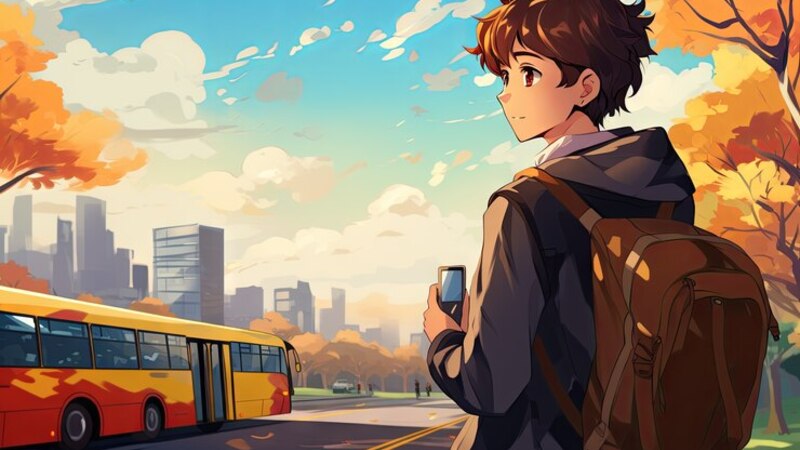Boy:c_udant_abg= Anime has captivated audiences worldwide, but one of the most popular genres within the anime community is Boy:c_udant_abg= Anime, also known as Shōnen. From action-packed sequences to themes of friendship, growth, and adventure, Shōnen anime resonates deeply with both young and older audiences. This guide delves into the appeal, characteristics, and cultural significance of Boy:c_udant_abg= Anime Stories.
The Origins of Boy:c_udant_abg= Anime
Early Beginnings of Anime
Anime traces its roots back to early Japanese manga, comic books with stylized art that laid the foundation for modern animation in Japan. The earliest forms of anime were influenced by Western animation, but over time, it evolved into a distinct art form that told culturally rich stories with unique visual styles. The influence of manga cannot be understated, as many early anime were adaptations of popular manga series.
The post-war period in Japan saw the rise of some of the most influential creators, like Osamu Tezuka, who is often referred to as the “God of Manga.” His work “Astro Boy” became a major influence on future anime series. The progression from short films to full-length anime television series set the stage for the creation of genres, including Boy:c_udant_abg= Anime Stories that would define youth entertainment.
Shōnen: The Foundation of Boy:c_udant_abg= Anime
Shōnen, meaning “young boy” in Japanese, refers to anime and manga primarily aimed at young male audiences, typically between the ages of 12 and 18. However, the influence of Shōnen has grown beyond its target demographic, attracting audiences of all ages and genders. Shōnen anime emphasizes action, adventure, and personal growth, often with a strong male protagonist who embarks on a journey, both literal and metaphorical.
The genre quickly became popular because it combined elements of friendship, rivalry, perseverance, and moral lessons—things that appeal universally to the experience of growing up. These themes are explored through fantastical settings, unique powers, and challenges that resonate with young boys learning to navigate the complexities of life.
Iconic Boy:c_udant_abg= Anime from the Past
Anime that focused on boy protagonists gained traction in the late 20th century, with iconic titles such as “Dragon Ball” and “Naruto” paving the way for future Shōnen series. These anime are known for their rich narratives, character development, and themes that resonate with youth. Shows like “Yu Yu Hakusho,” “One Piece,” and “Bleach” continue to be fan favorites for their memorable characters and epic journeys.
Key Characteristics of Boy:c_udant_abg= Anime
Action-Packed Adventures
One of the key characteristics of Boy:c_udant_abg= Anime is its emphasis on action. Whether it’s through epic battles, high-stakes competitions, or thrilling quests, action scenes are designed to keep audiences on the edge of their seats. These sequences are often elaborately animated, with each punch, kick, and energy blast portrayed in vivid detail.
Action is not only about physical confrontations but also about the emotional struggles that characters face. In series like “Naruto,” the fights symbolize deeper themes like overcoming adversity, pushing personal limits, and protecting loved ones. Action-driven anime often use these moments to highlight personal growth and the evolving capabilities of the characters.
Strong, Young Male Protagonists
At the heart of every Boy:c_udant_abg= Anime is a strong, often young, male protagonist. These characters are often portrayed as underdogs who must rise to the occasion to face challenges much bigger than themselves. The journey of these heroes typically follows the arc of personal development, from inexperience to mastery.
Characters like Naruto Uzumaki, Son Goku from “Dragon Ball Z,” and Monkey D. Luffy from “One Piece” have become global icons because of their relatable journeys. Their stories resonate with young viewers who are also learning about themselves and their place in the world. Despite the often fantastical settings, the internal struggles these characters face—self-doubt, loyalty, ambition—are universal.
Themes of Friendship and Loyalty
The bonds of friendship and loyalty play pivotal roles in the narratives of Boy:c_udant_abg= Anime. These relationships are often portrayed as the most important in the protagonist’s life, sometimes even more important than the hero’s individual success. Whether it’s Naruto’s unbreakable bond with Sasuke or Luffy’s deep loyalty to his Straw Hat crew, friendships are portrayed as essential to the journey.
Loyalty and sacrifice for friends are key themes that reinforce the emotional stakes in Boy:c_udant_abg= Anime. When a character is willing to risk their life for the sake of a friend, it adds a layer of depth to their motivations, making their victories feel more impactful and their losses more tragic.
Character Growth and Personal Development
Another essential element of Boy:c_udant_abg= Anime is the focus on character growth and personal development. Protagonists often start as weak or inexperienced but gradually grow stronger through training, mentorship, and experience. This progression is not limited to physical strength but also involves emotional maturity, strategic thinking, and moral fortitude.
In series like “My Hero Academia,” Izuku Midoriya starts as an ordinary boy with no powers but grows into a hero who is capable of wielding extraordinary abilities. His journey, filled with self-doubt, hard work, and resilience, is symbolic of the broader theme that hard work and perseverance can lead to success, a message that resonates with audiences globally.
Rivalries and Competitions
Rivalries are another cornerstone of Boy:c_udant_abg= Anime, often serving as the driving force behind character development. These rivalries push the protagonists to their limits, forcing them to grow stronger and more determined. Rivalries can range from friendly competitions to deeply personal, emotionally charged conflicts that define the narrative.
A well-known example is the rivalry between Naruto and Sasuke in “Naruto.” Their relationship evolves from a friendly rivalry to a complex bond filled with resentment, admiration, and ultimately, reconciliation. These rivalries not only provide thrilling action sequences but also deepen the emotional layers of the story, making the characters’ victories feel earned.
Fantasy and Sci-Fi Elements
Many boy-centric anime are set in fantastical worlds filled with supernatural powers, futuristic technologies, and otherworldly creatures. These elements provide an exciting backdrop for the characters’ adventures and help to elevate the stakes of the story. Fantasy and sci-fi elements are often intertwined with themes of destiny, power, and morality.
In “Attack on Titan,” for example, the series blends science fiction with dark fantasy, placing its characters in a dystopian world where humanity must fight to survive against giant humanoid creatures known as Titans. The fantastical elements of the story make it both thrilling and unpredictable, keeping viewers engaged from start to finish.
Popular Tropes in Boy-Centric Anime
The Hero’s Journey
The hero’s journey is one of the most common narrative structures in boy-centric anime. This trope follows a young protagonist as they leave their familiar world, face challenges, meet mentors, and ultimately grow into a hero. This journey is not only physical but also emotional and psychological, as the hero learns important life lessons along the way.
In series like “Naruto” and “One Piece,” the hero’s journey is a central narrative arc. Naruto leaves his village to become stronger and prove his worth, while Luffy sets sail to find the One Piece and fulfill his dream of becoming the Pirate King. Both characters face immense challenges, but their determination to achieve their goals keeps them moving forward.
The Underdog Story
Another popular trope in boy-centric anime is the underdog story, where the protagonist starts with little to no power or status but gradually rises to greatness through hard work, determination, and perseverance. This trope resonates strongly with viewers, as it mirrors real-life struggles of overcoming obstacles and defying expectations.
A classic example of the underdog story is seen in “My Hero Academia,” where the main character, Izuku Midoriya, starts with no powers in a world where almost everyone has them. Despite this, he is determined to become a hero and eventually gains the ability to do so through sheer willpower and persistence. This story arc reinforces the idea that anyone can achieve greatness with enough effort.
Power Levels and Training Montages
Training montages are a hallmark of boy-centric anime, often used to show the protagonist’s journey toward self-improvement. These montages typically involve intense physical training, mental preparation, and sometimes, the acquisition of new powers or skills. Power levels are often tracked throughout the series, allowing viewers to see the protagonist’s progress.
Shows like “Dragon Ball Z” famously employ this trope, where characters like Goku constantly train to increase their power levels. The progression of power not only adds excitement to the story but also serves as a visual representation of the character’s growth. This incremental development keeps viewers invested in the journey.
Overpowered Protagonists
In contrast to the underdog trope, some boy-centric anime feature protagonists who start off exceptionally powerful. These characters often have a hidden potential or extraordinary abilities that set them apart from others. While they may still face challenges, their overwhelming power adds an interesting dynamic to the story, often creating tension around how they will control or harness their abilities.
“One Punch Man” is a notable example, with its protagonist, Saitama, being so powerful that he can defeat any opponent with a single punch. While the show is a satire of the Shōnen genre, it explores the idea of what happens when a hero’s strength is unmatched and the existential boredom that comes with it.
Read more: Kawaii:kxkzate62mc= Cute Wallpapers










